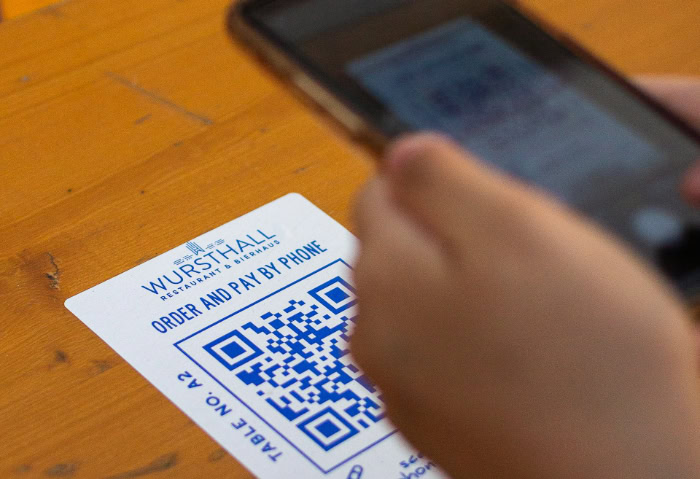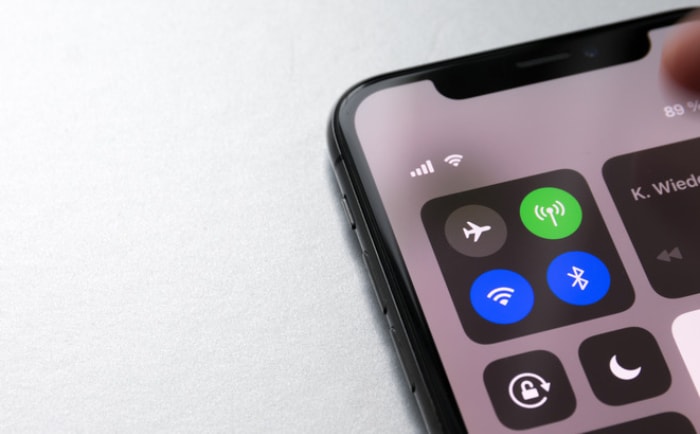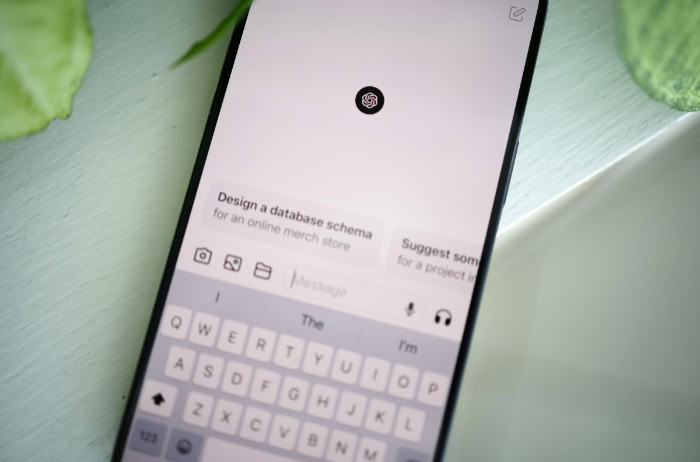What Is a QR Code? Why You See It Everywhere

You see them plastered on restaurant tables, printed on parking meters, and flashed on television screens. The Quick Response (QR) code has rapidly transformed from an obscure industrial tool into a standard part of daily communication.
Unlike the simple barcodes on cereal boxes that only hold data horizontally, these two-dimensional matrix barcodes store information both vertically and horizontally. This unique structure allows them to contain significantly more data, from website links to complex contact details, all within a small, pixelated square.
Despite their widespread use, few people understand the sophisticated engineering hidden behind those black-and-white patterns.
The Fundamentals of QR Technology
Quick Response technology represents a significant shift in how machines read and interpret data. It moves beyond simple identification numbers to carrying actual content within the printed image itself.
While the technology appears complex visually, it relies on a structured method of encoding information that allows for speed, density, and resilience.
Comparing 1D and 2D Barcodes
The familiar black-and-white stripes found on grocery items are linear or one-dimensional (1D) barcodes. A scanner reads the width of the vertical lines and the spaces between them to retrieve a specific string of numbers.
This string typically points to a database entry but does not hold the product details itself. The limitation of linear barcodes lies in their capacity. They can only hold a small string of alphanumeric characters and require a link to an external system to be useful.
QR codes operate as two-dimensional (2D) matrix barcodes. They encode data across both the horizontal and vertical planes of the square grid.
This structural change expands storage potential dramatically. While a standard linear barcode might store around 20 to 80 characters depending on the format, a single QR code can hold over 4,000 alphanumeric characters.
This density allows the code to contain functional instructions or complete information rather than just a reference number.
Data Capacity and Versatility
The expanded storage capability allows the code to act as a standalone data container. It functions without always needing an immediate database connection for every detail.
The most frequent application involves encoding Uniform Resource Locators (URLs) to direct mobile browsers to specific webpages. However, the technology handles much more than just website links.
Users can encode entire vCards to share contact details instantly, allowing a smartphone to save a new contact with a name, number, and email address in seconds. It can store plain text messages, geolocation coordinates, or calendar events.
A highly practical utility involves encoding Wi-Fi network credentials. A simple scan connects a device to a secured network without the user needing to type complex passwords manually.
Origins and Evolution
The technology emerged from the automotive industry rather than consumer electronics. Denso Wave, a subsidiary of Toyota, developed the system in 1994 to improve the tracking of vehicles and parts during manufacturing.
Traditional barcodes slowed down the production process because they held too little information and required precise alignment for scanners to work.
The engineering team prioritized high-speed reading capabilities, leading to the name “Quick Response.” They needed a code that cameras could interpret instantly from various angles.
Denso Wave chose to make the specification publicly available and did not exercise their patent rights. This open approach allowed the standard to spread freely outside the factory floor, eventually permeating mobile technology, advertising, and logistics sectors worldwide.
The Anatomy of a QR Code

A QR code may look like a randomized collection of pixelated noise, but every square and empty space serves a specific, calculated purpose. The design relies on a strict geometric structure that tells a scanner exactly how to read the information, where the data begins, and how to interpret the binary language hidden within the grid.
Finder Patterns and Orientation
The most distinctive features of any QR code are the large square symbols located in the top-left, top-right, and bottom-left corners. These are known as finder patterns.
They function as navigational anchors for the scanning device. When a camera views the code, it instantly seeks out these three landmarks to determine the position of the image.
Finder patterns allow the code to be read from any direction. You can scan the image upside down, sideways, or at a skewed angle, and the software will use the relative position of these three squares to correct the orientation before processing the data.
They effectively tell the scanner which way is “up,” ensuring that the information is decoded in the correct order regardless of how the user holds their device.
Data Modules and the Quiet Zone
The area between the finder patterns is filled with a matrix of smaller black and white squares called modules. These modules act as the fundamental units of data storage.
Each individual square represents a bit of binary code, translating to either a one or a zero. The specific arrangement of these black and white blocks encodes the alphanumeric characters, URLs, or control information required for the code to function.
Surrounding this dense grid of modules is a mandatory margin known as the quiet zone. This is the clear white border that frames the entire QR code.
While it contains no data itself, the quiet zone is essential for readability. It provides a high-contrast buffer that separates the code from its surroundings, such as packaging graphics or magazine text.
Without this clear boundary, the scanner cannot distinguish where the code ends and the rest of the environment begins, leading to scanning failures.
Error Correction and Resilience
The system incorporates a powerful safeguard known as Reed-Solomon error correction. Originally developed for data transmission and storage technologies like CDs, this mathematical algorithm allows a QR code to function even when parts of it are missing or obscured.
The code contains redundant data, meaning the information is stored multiple times in different ways within the pattern.
This built-in redundancy enables a scanner to reconstruct the correct data even if the image is dirty, torn, or partially covered. There are four levels of error correction available, allowing for the recovery of approximately 7% to 30% of the code’s structure.
This feature is what enables designers to place logos or icons in the center of a QR code. The scanner treats the logo as “damage” or a missing section and utilizes the error correction algorithms to fill in the gaps, ensuring the user is still directed to the correct destination.
Types and Functionality
While most Quick Response codes appear identical at a glance, they operate with distinct underlying mechanisms depending on their intended purpose. The technology offers flexibility in how data is stored and managed, allowing users to choose between permanence and adaptability.
Static Versus Dynamic Codes
The distinction between static and dynamic codes lies in how they store information. A static code embeds the data directly into the matrix pattern itself.
Once the code is generated and printed, the pattern is fixed. The information it holds cannot be modified. If a static code points to a specific website URL and that web address changes later, the printed code becomes useless.
This format works best for information that will remain constant, such as Wi-Fi credentials, plain text, or digital business cards.
Dynamic codes operate by storing a short redirect URL within the pattern rather than the final destination itself. When a user scans the code, the system directs them to an intermediary server which then instantly forwards them to the actual content.
This structure allows the creator to change the destination link at any time without altering the printed pattern. A restaurant can update its menu PDF or a marketing team can change a landing page while keeping the same physical QR code on their flyers.
Dynamic codes also enable data tracking, providing metrics on how many times a code was scanned, the geographic location of the user, and the type of device used.
The Mechanics of Scanning
The process of translating a pixelated grid into readable information occurs in a split second, but it involves a precise sequence of technical steps. The interaction begins when a camera’s optical sensor captures the image of the code.
The scanning software immediately identifies the three finder patterns to determine the code’s presence and orientation. It converts the visual image into a digital grid, distinguishing the dark modules from the light background.
Once the image is digitized, the software analyzes the arrangement of the modules to extract the binary data. It reads the grid according to specific masking patterns and timing rules embedded in the code structure.
The decoder translates this binary sequence, a long string of ones and zeros, into alphanumeric characters or bytes. Finally, the device interprets this data based on its format, instantly triggering the appropriate action, such as opening a browser window, dialing a phone number, or launching an application.
Customization and Aesthetic Flexibility
Early iterations of the technology required high contrast and strict adherence to the black-and-white standard to ensure readability. Modern processing power and the inherent error correction capabilities of the system now allow for significant visual customization.
Designers can integrate brand colors, soften the sharp edges of the square modules into circles, or embed logos directly into the center of the matrix.
The robustness of the error correction algorithm plays a central role here. Because the code can sustain a certain amount of “damage” and still function, the addition of a logo or a change in color is technically treated as data loss.
The scanner reconstructs the missing information using the redundant data stored elsewhere in the pattern. As long as there is sufficient contrast between the foreground and background, and the finder patterns remain intact, the code will function correctly.
This flexibility allows brands to make QR codes a coherent part of their visual identity rather than just a functional add-on.
Common Applications Across Industries

The utility of the Quick Response code extends far beyond its original manufacturing purpose. Its ability to store complex data in a small footprint has made it a practical tool for connecting physical objects to digital resources.
Enhancing Consumer Convenience
Mobile wallets and payment apps rely heavily on these codes to facilitate contactless transactions. A customer simply scans a merchant’s code to transfer funds instantly, bypassing cash or card terminals completely.
The hospitality sector adopted the technology to replace physical menus, allowing diners to view current offerings on their personal devices by scanning a sticker on the table. Event organizers utilize them for digital ticketing, where a unique code on a smartphone screen grants entry, eliminating the need for paper stubs and reducing the risk of counterfeit tickets.
Similarly, home and business owners print codes containing Wi-Fi credentials, enabling guests to join a network immediately without the frustration of typing out long, complicated passwords.
Educational and Informational Uses
Educational publishers integrate QR codes into printed textbooks to bridge the gap between static text and dynamic media. A student reading about a historical event or a complex chemical reaction can scan a code on the page to watch a supplementary video or view an interactive diagram.
Libraries use the technology to modernize cataloging systems, placing codes on book spines to help users locate items or access digital reviews and summaries instantly. In lecture halls, professors display codes on presentation slides to distribute materials, run live polls, or direct students to assignment portals, keeping the class focused and interactive without manual URL entry.
Business Operations and Logistics
The original purpose of the QR code remains a primary function in modern logistics. Warehouses and shipping companies use them to track inventory with precision, as the codes can hold detailed product specifications, batch numbers, and destination data.
A single scan updates a central database, ensuring stock levels are accurate and shipments are routed correctly. Marketing teams leverage this connection to drive offline traffic to online platforms.
By placing codes on billboards, flyers, or product packaging, businesses create a direct path for potential customers to visit a website, redeem a coupon, or sign up for a newsletter, turning a physical advertisement into a measurable digital interaction.
Security Risks and Best Practices
While QR technology offers speed and efficiency, it also introduces specific vulnerabilities. Because humans cannot read the matrix pattern with their naked eye, they rely entirely on their devices to interpret the destination.
This blind trust creates opportunities for bad actors to exploit the system, turning a tool of convenience into a potential vector for cyberattacks. Users must recognize that a QR code is essentially a digital link, carrying the same risks as clicking an unknown URL in an email.
Malicious Codes and Quishing
Cybercriminals have adapted phishing techniques to utilize QR codes, a practice often called “quishing.” Attackers generate codes that direct users to fraudulent websites designed to look like legitimate login pages or payment portals.
Once a user enters their credentials, the attackers capture the sensitive data. In other scenarios, the code triggers a drive-by download, attempting to install malware or spyware on the device immediately upon scanning.
Since mobile devices often have fewer visible security indicators than desktop browsers, users may find it harder to spot the deception before it is too late.
Physical Tampering and Overlays
A low-tech but highly effective method of attack involves physically altering legitimate codes in public spaces. Criminals print their own malicious QR stickers and paste them directly over authentic codes found on parking meters, restaurant tables, or advertising posters.
A user intending to pay for parking might unknowingly scan the fake sticker and send money to a scammer instead of the city municipality. This type of attack exploits the static nature of printed media.
Since the original signage looks official, few people pause to check if a sticker has been applied over the intended graphic.
Safe Scanning Habits
Protecting against these threats requires a cautious approach to scanning. The most effective defense is verifying the URL before letting the browser load the page.
Most modern camera apps display a preview of the web address upon scanning. Users should inspect this link for misspellings, odd domain extensions, or unencrypted connections.
It is also advisable to avoid scanning random codes found on lampposts or walls without context. Using a dedicated security scanner app that checks links against known blacklists can add a layer of protection.
If a code asks for sensitive personal information or an immediate download, it is safest to close the page immediately.
Conclusion
Quick Response codes have successfully bridged the gap between offline media and online resources, transforming how people interact with their environment. What began as a method to track automotive parts now facilitates everything from contactless payments to instant Wi-Fi access.
The technology stands out because of its resilience and capacity, offering a reliable way to transmit complex data through a simple visual medium. This adaptability ensures that the matrix barcode will remain a persistent element in global communication infrastructure for the foreseeable future.
As this technology continues to permeate daily life, maintaining a focus on security remains essential. The same features that make these codes efficient, such as speed and ease of use, can be exploited by those looking to deceive unsuspecting users.
Safe adoption relies on a combination of technological safeguards and personal caution. Verifying sources and previewing links before clicking are small but necessary steps to prevent data theft.
By treating these digital shortcuts with healthy skepticism, users can enjoy the benefits of instant connectivity without compromising their privacy or safety.


